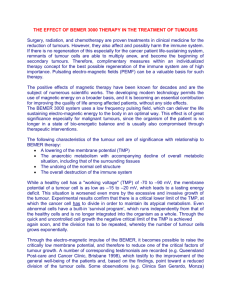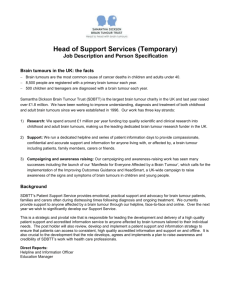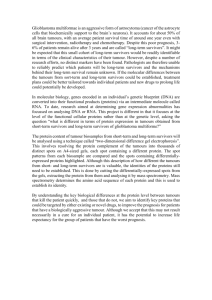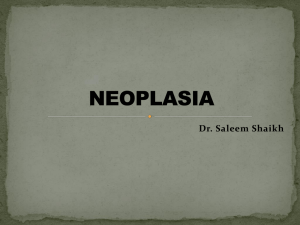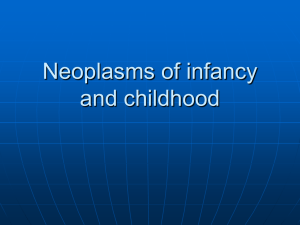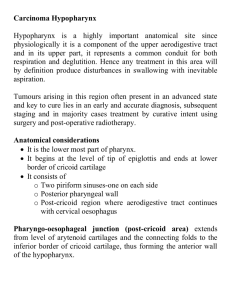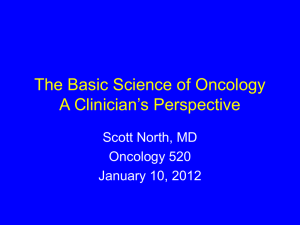chemoradiation for oesophageal cancer: patient-tailored
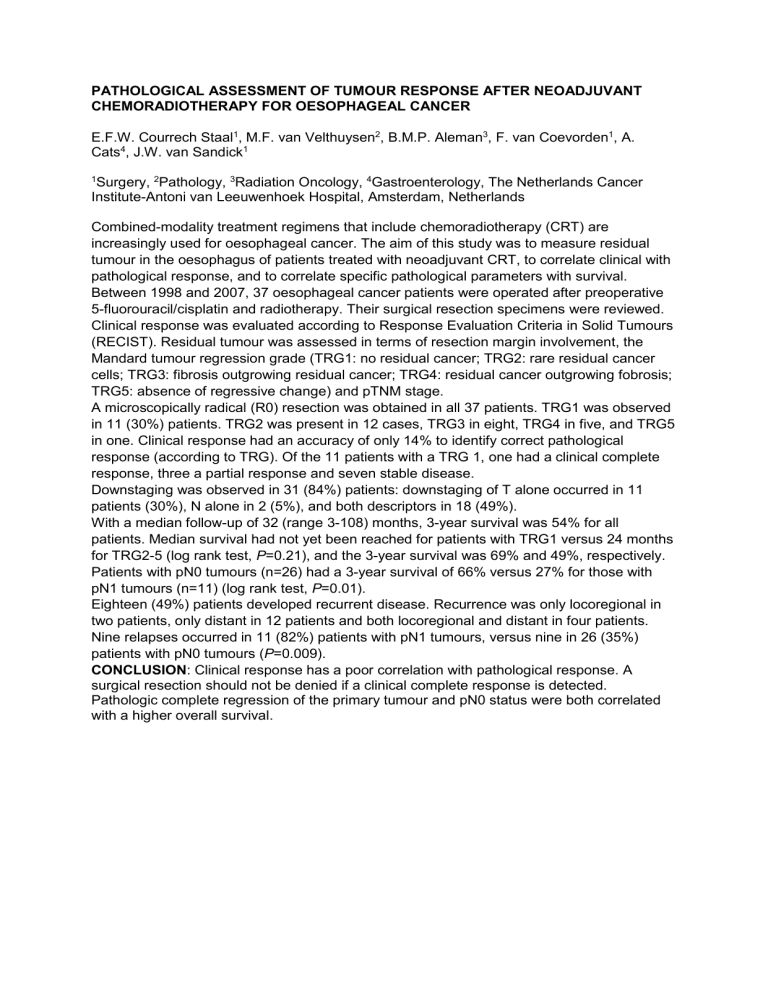
PATHOLOGICAL ASSESSMENT OF TUMOUR RESPONSE AFTER NEOADJUVANT
CHEMORADIOTHERAPY FOR OESOPHAGEAL CANCER
E.F.W. Courrech Staal 1 , M.F. van Velthuysen 2 , B.M.P. Aleman 3 , F. van Coevorden 1 , A.
Cats 4 , J.W. van Sandick 1
1 Surgery, 2 Pathology, 3 Radiation Oncology, 4 Gastroenterology, The Netherlands Cancer
Institute-Antoni van Leeuwenhoek Hospital, Amsterdam, Netherlands
Combined-modality treatment regimens that include chemoradiotherapy (CRT) are increasingly used for oesophageal cancer. The aim of this study was to measure residual tumour in the oesophagus of patients treated with neoadjuvant CRT, to correlate clinical with pathological response, and to correlate specific pathological parameters with survival.
Between 1998 and 2007, 37 oesophageal cancer patients were operated after preoperative
5-fluorouracil/cisplatin and radiotherapy. Their surgical resection specimens were reviewed.
Clinical response was evaluated according to Response Evaluation Criteria in Solid Tumours
(RECIST). Residual tumour was assessed in terms of resection margin involvement, the
Mandard tumour regression grade (TRG1: no residual cancer; TRG2: rare residual cancer cells; TRG3: fibrosis outgrowing residual cancer; TRG4: residual cancer outgrowing fobrosis;
TRG5: absence of regressive change) and pTNM stage.
A microscopically radical (R0) resection was obtained in all 37 patients. TRG1 was observed in 11 (30%) patients. TRG2 was present in 12 cases, TRG3 in eight, TRG4 in five, and TRG5 in one. Clinical response had an accuracy of only 14% to identify correct pathological response (according to TRG). Of the 11 patients with a TRG 1, one had a clinical complete response, three a partial response and seven stable disease.
Downstaging was observed in 31 (84%) patients: downstaging of T alone occurred in 11 patients (30%), N alone in 2 (5%), and both descriptors in 18 (49%).
With a median follow-up of 32 (range 3-108) months, 3-year survival was 54% for all patients. Median survival had not yet been reached for patients with TRG1 versus 24 months for TRG2-5 (log rank test, P =0.21), and the 3-year survival was 69% and 49%, respectively.
Patients with pN0 tumours (n=26) had a 3-year survival of 66% versus 27% for those with pN1 tumours (n=11) (log rank test, P =0.01).
Eighteen (49%) patients developed recurrent disease. Recurrence was only locoregional in two patients, only distant in 12 patients and both locoregional and distant in four patients.
Nine relapses occurred in 11 (82%) patients with pN1 tumours, versus nine in 26 (35%) patients with pN0 tumours ( P =0.009).
CONCLUSION : Clinical response has a poor correlation with pathological response. A surgical resection should not be denied if a clinical complete response is detected.
Pathologic complete regression of the primary tumour and pN0 status were both correlated with a higher overall survival.



